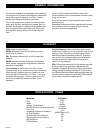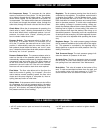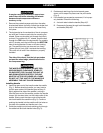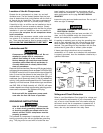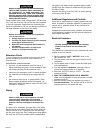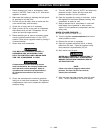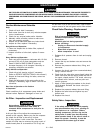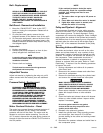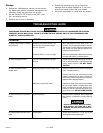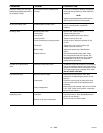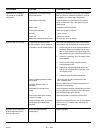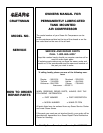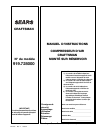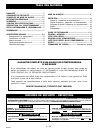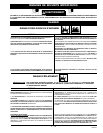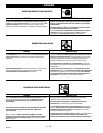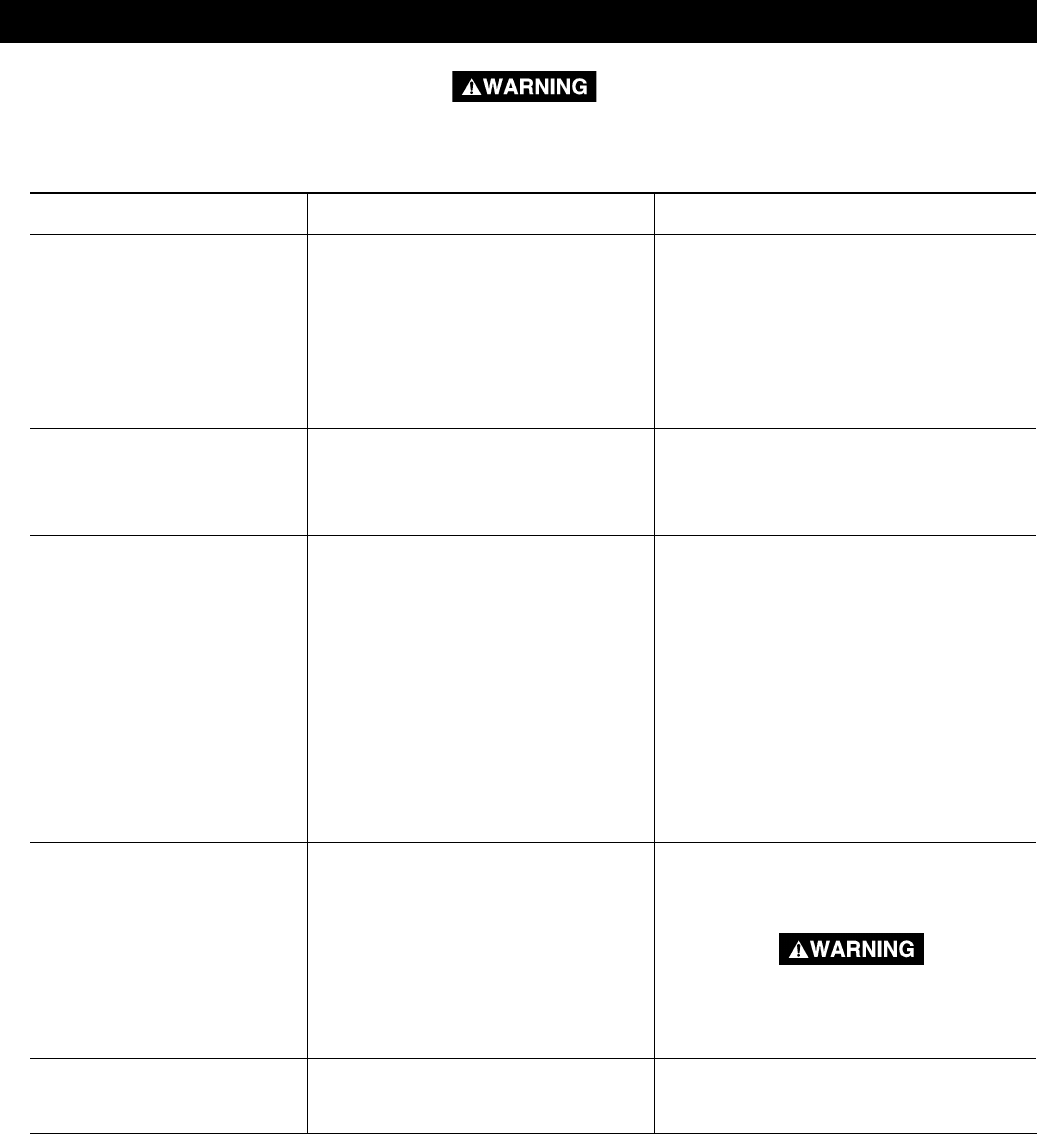
14 — ENG
D21245
PROBLEM
CAUSE CORRECTION
PERFORMING REPAIRS MAY EXPOSE VOLTAGE SOURCES, MOVING PARTS OR COMPRESSED AIR SOURCES.
PERSONAL INJURY MAY OCCUR. PRIOR TO ATTEMPTING ANY REPAIRS, UNPLUG THE COMPRESSOR AND
BLEED OFF TANK AIR PRESSURE.
TROUBLESHOOTING GUIDE
Storage
1. Review the "Maintenance" section on the preced-
ing pages and perform scheduled maintenance as
necessary. Drain the water from the air tank.
2. Set the ON/AUTO-OFF switch to the "OFF" posi-
tion, and unplug the unit.
3. Remove any air tool or accessory.
4. Protect the electrical cord and air hose from
damage (such as being stepped on or run over).
Wind them loosely around the outfit handle.
5. Store the compressor in a clean and dry location.
Excessive tank pressure - safety
valve pops off.
Air leaks at fittings or hose.
Air leaks at pressure switch
release valve.
Air leaks in air tank or at air tank
welds.
Air leaks between head and valve
plate.
Move the pressure switch lever to the “O”
position. If the compressor doesn’t shut off,
disconnect from the electrical outlet source
and return to a Sears Service Center to re-
place the pressure switch.
Return the compressor to Sears Service Center
to check and adjust, or replace switch.
Tighten fittings using teflon tape where air
can be heard escaping. Check fittings with
soapy water solution. DO NOT OVER-
TIGHTEN.
Return to Sears Service Center for replace-
ment of pressure switch.
Check to see if the pin in the bottom of the
pressure release valve is stuck. If it does not
move freely, return to the Service Center for
replacement of pressure switch.
A defective check valve results in a constant
air leak at the pressure release valve when
there is pressure in the tank and the com-
pressor is shut off. Remove and clean or re-
place check valve. DO NOT OVERTIGHTEN.
Air tank must be replaced. Do not repair the
leak. Return compressor to Sears Service
Center.
Torque head screws to 7-10 ft. lbs. If this
does not stop leak, replace seal.
Pressure switch does not shut off
motor when compressor reaches
cut-out pressure.
Pressure switch cut-out too high.
Tube or hose fittings are not tight
enough.
Defective pressure switch release valve.
Defective or dirty check valve.
Defective air tank.
Leaking seal.
DO NOT DRILL INTO, WELD OR OTHER-
WISE MODIFY AIR TANK OR IT WILL
WEAKEN. THE TANK CAN RUPTURE OR
EXPLODE.



